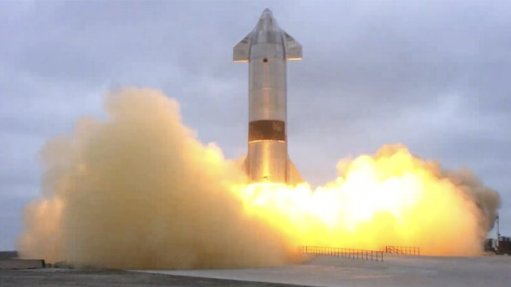
Starship SN15 launching from Starbase
Photo by: SpaceX
SpaceX’s latest crewed spaceship design, the Starship, made its first fully successful test flight on Wednesday. This was the fifth such attempt, the previous four all seeing the rockets concerned blowing up, at different stages of the flight profile. This fifth flight involved an improved version of the spacecraft, designated SN15. This incorporated “multiple upgrades and improvements”, reported SpaceX principal integration engineer John Insprucker. These changes were the result of analyses of the failure of the previous test flight.
The test programme is being carried out at the company’s facility in Texas, known as Starbase, located near the small town of Boca Chica. After the flight, SpaceX founder, chief engineer and CEO, South African-born Elon Musk, tweeted “Starship landing nominal!” (Nominal is space jargon for everything functioned as designed and intended.)
The Starship is intended to be both the second stage of the complete Starship launch system (which will be composed of the Starship itself plus SpaceX’s ‘Super Heavy’ rocket) and a reusable spacecraft carrying people and/or cargo. (The Super Heavy rocket will also be reusable.) The Starship system is intended to carry astronauts to Earth orbit and beyond – particularly to the Moon and Mars.
“SN15 was powered by three Raptor engines, each shutting down in sequence prior to the vehicle reaching apogee [maximum altitude for this particular flight] – approximately 10 km in altitude,” said SpaceX in its statement about the flight. “SN15 performed a propellant transition to the internal header tanks, which hold landing propellant, before reorienting itself for re-entry and a controlled aerodynamic descent. The Starship prototype descended under active aerodynamic control, accomplished by independent movement of two forward and two aft flaps on the vehicle.”
The onboard flight computer controlled all four flaps, ensuring the spacecraft maintained the correct attitudes throughout the flight and landing it precisely on the desired landing pad. In the final stages of the flight, as the SN15 executed the required ‘landing flip’ manoeuvre, its Raptor engines (also developed by SpaceX) reignited to ensure a soft landing.
The Starship has a height of 50 m and a diameter of 9 m. Its propellant capacity is 1 200 t and, when launched by the Super Heavy rocket, it will have a payload capacity of 100 t or more. The fairing covering the Starship’s payload volume is 18 m high and 9 m in diameter. This payload volume is the biggest available on any current or planned launch vehicle, and can be configured to carry both people and cargo.